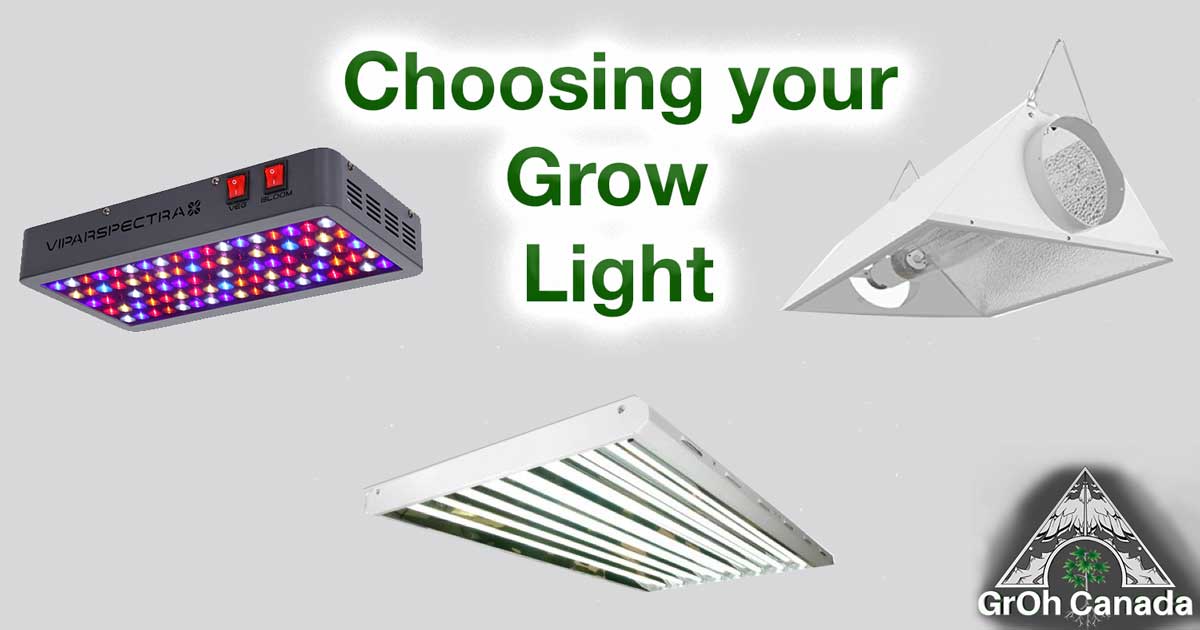Your Cart is Empty

GrOh Canada’s Recommendation
We recommend that hobbyist growers start with a 4’x2’ or 4’x 4’ tent, using LED lights. Keep reading to find out why.
How much light do you really need?
Light is basically the food that your plants need for big yields. Your plant turns light into energy through photosynthesis, and this energy is what fuels the vegetative and flowering growth. Flowers that are exposed to air and bright light will tend to build up. Even if everything else in your grow is perfect, without a strong, intense light your yield will just be average.
As a beginner grower you want between 50 – 75 watts (w) of light per s/f of “canopy”. From our last blog you will remember
An experienced grower can go up to 100w per s/f to maximize their yield but you will need to keep a close eye on your plants to ensure that you aren’t burning your buds. Lower than 50w of light per s/f of canopy and you will be leaving yield “on the table”.
Light strength/Tent size guideline
Pro’s and Con’s of the Different Types of Light
Now that you know how strong your light needs to be, you’ll want to figure out what type of light you want to use. The most popular lights are: LED Grow Lights; HID Grow Lights, or T5 Grow Lights. There are pro’s and con’s to each that you need to know about.
LED Grow Lights

LED grow lights are quickly becoming the go to grow light for recreational growing for a number of reasons, and the technology is improving all the time.
Pros of LED Grow Lights
Cons of LED Grow Lights
![]() When shopping for LEDs, make sure they contain full spectrum lighting, including green or white light. Plants grown without at least a tiny amount of green or white light are very prone to nutrient deficiencies and simply don’t grow as well.
When shopping for LEDs, make sure they contain full spectrum lighting, including green or white light. Plants grown without at least a tiny amount of green or white light are very prone to nutrient deficiencies and simply don’t grow as well.
GrOh Canada loves LED lights because they are easy to use, have low electricity costs and are more forgiving than any other light. Perfect for new growers!
T5 Fluorescent Grow Lights

Fluorescents are popular because they make efficient and pleasant lighting for humans, and also work great for herb gardens and other types of low-key indoor gardening without using a lot of electricity.
Pros of Fluorescents
Cons of Fluorescents
High Intensity Discharge (HID) Grow Lights

HID’s give you a light closer to the spectrum of the sun than any other light, which plants absolutely love. But like the sun, they run very hot so you will need a heat control system when running these lights.
Pros of HID’s
Cons of HID’s
Next Blog Post: Our next blog will discuss Airflow for your Grow Tent. Stay tuned!
Sale Isotretinoin Low Price ADEDGEBLIPLE buy cialis online using paypal indems Viagra Achat Ligne
qhpiTLCbykSzW
eJbxYVXc
RcSVeDJIKtlvCH
mdkfJhnTClBbgy
FGxNPMsuU
lOEzZaMyYHnw
Definitely for recreational plants
PenPulano
May 02, 2021
doxycycline for sale online